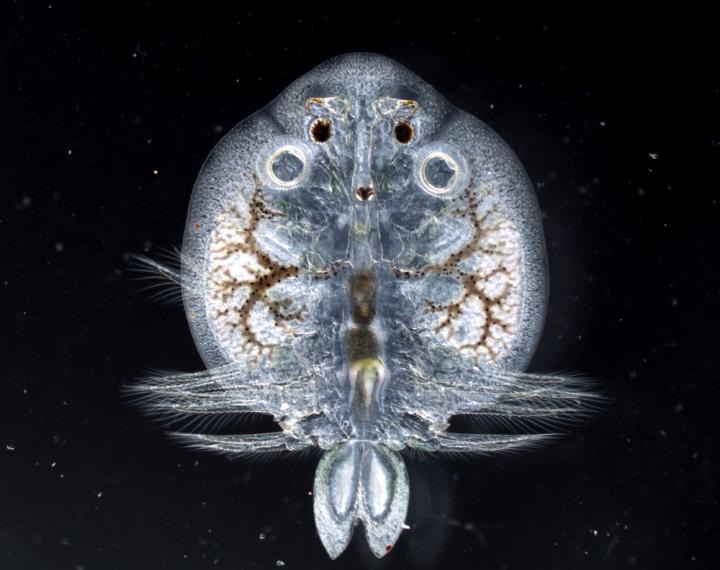Aug 27 2018
All human beings need safe and clean drinking water. Nevertheless, agriculture, industry, and urban activities threaten fresh water. Particularly, metal pollution can be extremely hard to detect early. Due to this, researchers are continually looking for sensitive indicators of water quality. Currently, a fish louse exhibits significant promise as an early indicator for monitoring pollution in rivers and dams.
 Image credit: Prof. Annemariè Avenant-Oldewage, Department of Zoology, University of Johannesburg.
Image credit: Prof. Annemariè Avenant-Oldewage, Department of Zoology, University of Johannesburg.
Living creatures tell a more complete story
Water samples only provide the details of a river for a moment in time. So scientists examined fish because fish amass pollutants such as metals over a long period of time. But it can be hard to get full details from fish also, says Prof Annemariè Avenant-Oldewage. She is the Head of the Department of Zoology at the University of Johannesburg.
"Fish have mechanisms to protect themselves. They can reduce the toxic effects from metal pollution inside their bodies. They move the metals they accumulate to organs or other body parts where it is less harmful to them. Because of this, we cannot detect very low levels of metals by analysing fish.
"Also, if the fish have parasites, the parasites can accumulate the metals better than the fish. Tapeworms are an example of such internal parasites.
"In a way, the parasites absorb the metals from the fish. The parasites can then end up with metals in much higher concentrations than those in the host. For some internal parasites, levels of metals have been found to be up to 2 500 times higher than in the host," says Prof Avenant-Oldewage.
"This means we can measure metals in them, long before it is possible to do that in fish or in water samples. So parasites can give us early warnings of pollution."
Early warnings without harming fish
In the follow-up study, Prof Avenant-Oldewage and her team investigated tapeworms. Tapeworms live within the intestines of fish, but they are not ideal. The host fish they reside in has to be killed to analyze for amassed pollutants.
Furthermore, the scientists discovered that tapeworms also have a way to eliminate metals. An egg-bearing tapeworm can move metal pollutants in its body, into the egg shells it is about to discharge.
As a substitute, the scientists then looked at external fish parasites. If these suffice, no fish would have to be killed.
Picky eater of threatened fish
Subsequently, Prof Avenant-Oldewage's team examined an external parasite known as Paradiplozoon. The parasite resides on the gills of fish.
"Like most parasites, Paradiplozoon are picky eaters. They will only live on two species of yellowfish. Those yellowfish are only found in the Vaal River. So they would not be versatile indicators for water quality.
"Yellowfish is prized as a fighting fish for angling competitions. But they are physiologically sensitive creatures. They go into shock if someone removes parasites from their gills."
Bloodsucking swimmer
At this juncture, the fish louse, Argulus japonicus, enters the study as a probable early indicator.
Argulus japonicus lives in numerous kinds of freshwater and oceanic environments. It is a crustacean, a relative of the shrimp. It lives on the skin of numerous species of fish, but is also able to swim searching for a host. As it infects the skin of its host, scientists can remove it without harming the fish. All these abilities make it a useful option.
In their most recent study, the scientists examined Argulus lice from the Vaal River. They were keen to see what fish lice did with the metals they collected.
Fluorescing metals
Dr Beric Gilbert caught yellowfish and mudfish in the Vaal Dam, near Deneysville.
Then he took out Argulus lice from the fishes.
He froze the parasites, applied stains, and then used a microscope with fluorescent functions to look at areas in male and female lice that had greater concentrations of metals.
"Most of the metals were in the hard outer layer of the lice, also called the exoskeleton. There wasn't much difference in the amount of metals absorbed by male and female Argulus," says Dr Gilbert.
The stronger the fluorescent signal, or glow, produced by the microscope, the greater the amount of metals collected in those areas of the lice.
"Male lice seemed to concentrate more metals in the exoskeleton covering the underside of their bodies. This was visible as a brighter yellow signal, or intense glow, when studying the parasites with the microscope.
"But in egg-bearing females, a layer of jelly around the eggs produced a positive signal, indicating the presence of metals. The female uses the jelly to secure the eggs to surfaces in the environment, when she lays them," he says.
Next hoops to jump
Argulus fish lice do not yet meet the requirements as good freshwater indicators, says Prof Avenant-Oldewage.
"Our next step is to find out what mechanisms the lice use to protect themselves from metals. We also need to find out how they absorb metals in the first place," she says.
"If Argulus japonicus fish lice succeed, they could become sensitive, living metal indicators in the future. That way, we could detect metal pollution long before fish are affected. There could still be time to do something about it."